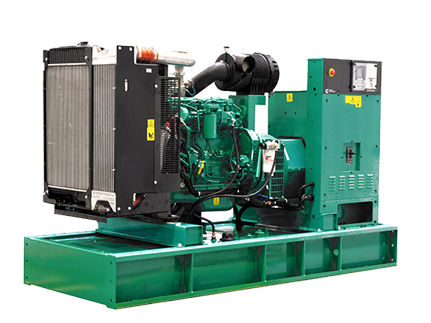Leading Tips for Inspecting Used Engines for Sale Prior To Making a Purchase
Leading Tips for Inspecting Used Engines for Sale Prior To Making a Purchase
Blog Article
Important Considerations for Ensuring High Quality and Durability being used Engines
When considering the purchase of an utilized engine, ensuring its quality and durability needs a complex strategy. Upkeep background is a pivotal element, as it offers insight into the engine's past care and potential future reliability. Past documents, a detailed examination of physical parts-- such as belts, tubes, and seals-- can disclose concealed problems. Performance testing is also critical, using a picture of the engine's operational performance. Understanding the subtleties of these analyses and their ramifications can be complex. What are the vital approaches that can be utilized to navigate this detailed examination process efficiently?
Engine History Evaluation
In the world of used engines, a thorough engine background evaluation is vital to guaranteeing quality and integrity. Comprehending an engine's past can give vital understandings into its efficiency capacities and potential future long life. A meticulous history testimonial encompasses a number of vital aspects that play a considerable duty in assessing an engine's condition. To start with, maintenance records are crucial. Regular maintenance, consisting of oil adjustments, filter replacements, and scheduled tune-ups, suggest that the engine has actually been well-cared-for, lowering the possibility of unanticipated failings.
Furthermore, examining any kind of background of fixings or substitutes is essential. Engines that have undergone significant repair work might have underlying problems that might resurface. Comprehending the context of such fixings, whether due to manufacturing problems or owner carelessness, is important in developing a detailed analysis. Analyzing the engine's gas mileage can serve as an indication of wear and tear. Lower gas mileage engines are generally better, however it is additionally crucial to think about just how those miles were accumulated. An engine used mainly for long-distance highway driving might be in better problem than one based on regular stop-and-go city web traffic.
In significance, an exhaustive examination into an engine's background is vital for making informed getting decisions. used engines for sale.
Comprehensive Examination Overview
While understanding an engine's background gives important context, a comprehensive assessment is the following step to guarantee its existing condition straightens with historical data. The examination should start with an aesthetic assessment, inspecting for indicators of leaks, rust, and uncommon wear. Inspect the exterior for oil stains or coolant marks, which might show underlying issues.
Next, examine the engine's mounting system for any loosened screws or abnormalities that could impact efficiency. Pay very close attention to the condition of belts and hose pipes, as these elements are essential for optimal engine performance. Check out for splits, fraying, or any signs of degeneration.

Determining Wear and Tear
Recognizing indicators of deterioration is vital for assessing a used engine's longevity and integrity. It entails a precise evaluation of numerous engine parts to identify their current state and possible future performance. Common signs include noticeable corrosion, which can influence steel parts and endanger structural honesty. Rust on or around the engine block, cyndrical tube heads, and exhaust manifolds is especially worrying.
An additional crucial facet is checking the engine's seals and gaskets. These parts are necessary for maintaining correct pressure and protecting against fluid leaks. Proof of oil leakages or worn gaskets commonly recommends degeneration, possibly leading to much more extreme issues if not attended to promptly. Furthermore, irregular sounds throughout engine operation, such as knocking or ticking noises, might show internal damage or too much wear on relocating components like pistons or bearings.
The condition of belts and pipes is just as important, as they play an important function in the engine's total function. Broken or frayed belts and brittle pipes are indicators old that might lead to engine failure if neglected. Lastly, taking a look at the oil condition and filter can offer insights into previous maintenance practices, as dirty oil or clogged filters suggest neglect and accelerated wear.
Efficiency Testing Essentials
Examining the wear and tear of engine parts sets the stage for a thorough evaluation with performance screening. Performance testing offers as a vital measure in establishing the operational stability of a used engine.
Making use of dynamometers is a typical method in efficiency testing. These tools determine the engine's result across different problems, providing a thorough profile of its performance. In addition, on-road testing complements dynamometer evaluations by observing engine actions under common driving scenarios, ensuring it satisfies the needed criteria for both safety and effectiveness.
These tools examine engine monitoring systems, recognizing faults in digital parts that might impact efficiency. Comprehensive testing not only confirms the engine's operational status but also aids click to read in projecting future upkeep demands.
Upkeep and Treatment Tips
Correct upkeep and care are crucial to prolonging the lifespan of a used engine and ensuring its consistent performance. Routine oil modifications are vital; making use of the manufacturer's suggested oil kind and grade can stop too much wear and tear. Furthermore, oil filters need to be replaced concurrently to preserve ideal lubrication and sanitation within the engine.
Monitoring liquid levels, including coolant, transmission liquid, and brake fluid, is essential. Ensuring these fluids are at ideal degrees helps stop getting too hot and various other mechanical problems. Examining belts and hose pipes for indications of wear, such as cracks or fraying, can avoid prospective failings that may bring about costly repair services.
Routine evaluation of the air filter is also required, as a tidy filter guarantees reliable airflow and burning, thereby more maximizing engine performance. Ignition system ought to be inspected and changed when required to keep effective fuel combustion and protect against engine misfires.
Last but not least, normal diagnostic checks utilizing expert devices can identify prospective problems before they come to be significant issues. By sticking to these upkeep and treatment suggestions, made use of engine proprietors can ensure their engines remain trusted, efficient, and efficient in doing more than an extended period.
Verdict

Report this page